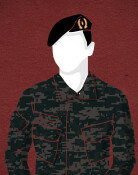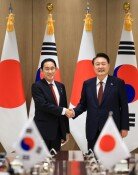Daily Lives of the Public Reflect Koreas History
Daily Lives of the Public Reflect Koreas History
Posted December. 19, 2007 09:10,

Park Hyeon-soo, a Yeungnam University professor and chairman of the Group for the People Without History in the 20th century, has written a book series titled Oral Statements of Koreas General Public, showing the everyday life of the general public. He says that his work is not just academic research, but a mission of a citizen who has lived through the 20th Century. The group published 15 books last year and an additional 13 books this year. Moreover, they have published several photo books. The Korea Research Foundation has provided financial support of around 7 billion won to him for the past six years.
Each volume of the series Oral Statements of Koreas General Public includes stories of the Korean people who have gone through the nations toughest era, checkered by Japanese rule in the early 20th Century and the Korean War in the 1950s. The books are written in a colloquial style to cover the lives of the public, such as Na Deok-oon, who was once influenced by leftism, Yoon Yeong-gook, who has worked as a photographer for the past six decades, and Lee Il-yong, who had worked as a carpenter at Bamseom Island and who helped refugees to cross the river on his ferry.
Park puts an emphasis on the series, saying, No nations have destroyed their history in exchange for national development as Korea did. If Korea continues to put priority on development while removing all the traces of past, the nation will look like a film set which has no origin.
In an attempt to minimize the possibility of real stories being manipulated, the groups researchers have recorded everything as they hear it. However, since the stories in the book have been told by interviewees saying their stories depending on their memories, some parts of the stories lack accuracy.
Professor Park says, Thats why we dont totally exclude written historical materials. Only when the people willing to tell their stories and the researchers recording their stories sit together, can a persons history become a societys history.
He argued that the publics stories are an urgent need, saying, The general public has gone without knowing how important their stories of everyday life are.
The people who can interpret the meaning of, A Scene nearby Cheonggyecheon Stream, a novel written by Park Tae-won in 1936, describing poor peoples daily lives living nearby Cheonggyecheon Stream, or films made in the 1970s when the whole nation was encouraged by the Saemaeul Movement, have disappeared.
The research group has tried to listen to the stories of people who can tell their daily lives while representing the public at the same time. Thats why its work is challenging. It is meaningful to find an 80-year-old man who moved to the city in the 1960s when the nations industry grew dramatically and who has worked as a city worker or was self-employed. However, such a person who has lived a humdrum life cannot explain every aspect of the daily lives of the Korean people in the 20th Century. To this end, they include a story of an old musician who played a saxophone every night, waiting to be called to a club.
Each researcher listens to a persons story for some 100 hours and looks at their pictures and everyday goods to make a good record. Recording takes as much as quadruple the time spent on listening.
Professor Park said, Shortly after Koreas independence in 1945, I made straw hats whose rims were made of film reels. I cannot find those hats anymore in Korea. Embarrassingly, the Smithsonian Museum has the hat. In order not to feel ashamed anymore, I hope our work will grow into a national campaign.
zeitung@donga.com
Headline News
- Medical school quotas expanded after 27 years by 1,509
- ‘Pension replacement rate of 44-45% is negotiable,’ says Lee Jae-myung
- 16 out of 20 food companies see cost ratio decrease in 1st quarter
- Oksana Chusovitina with 8 Olympics under her belt gets injured
- Real income effectively reduced amid inflation hikes







